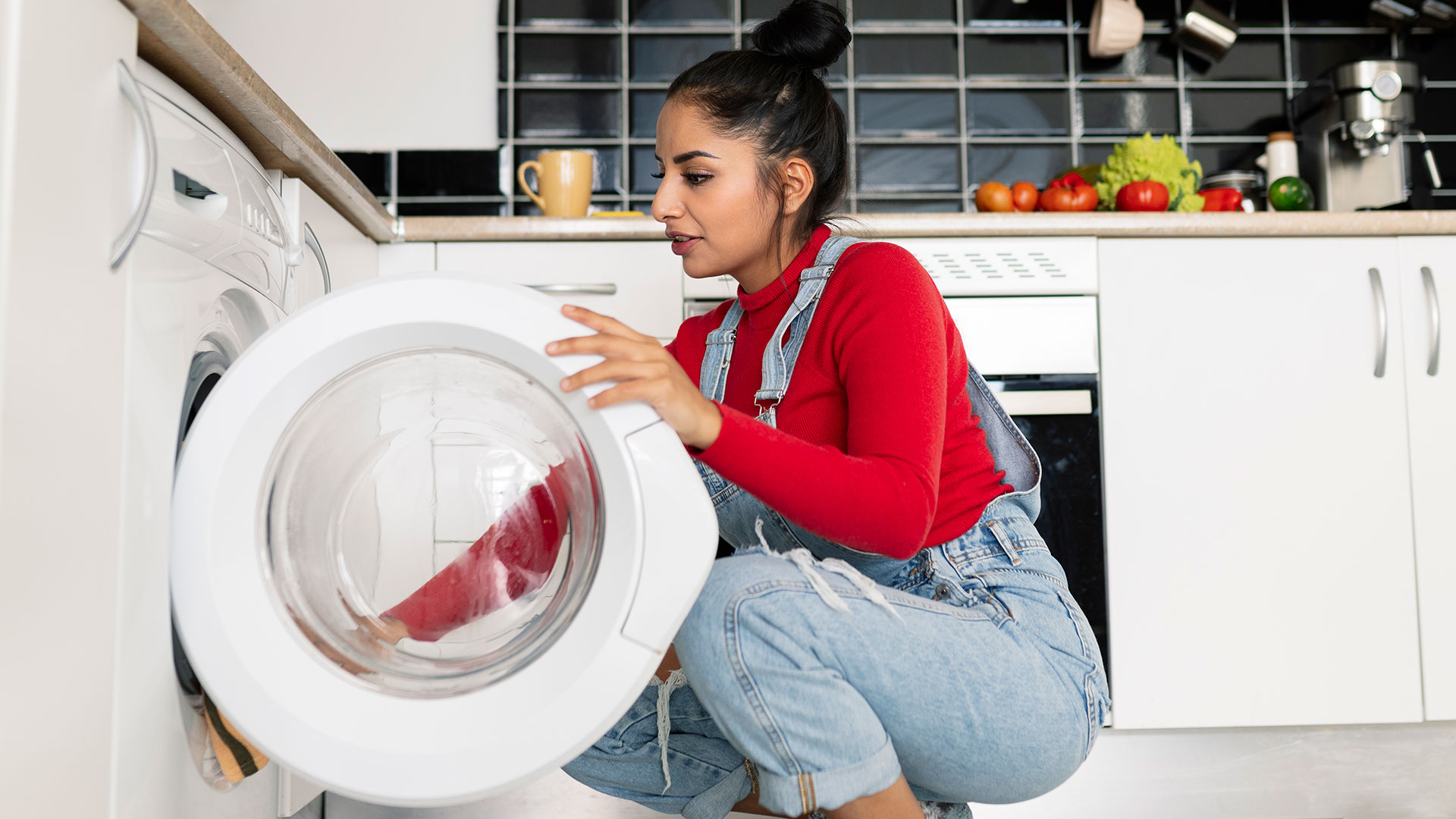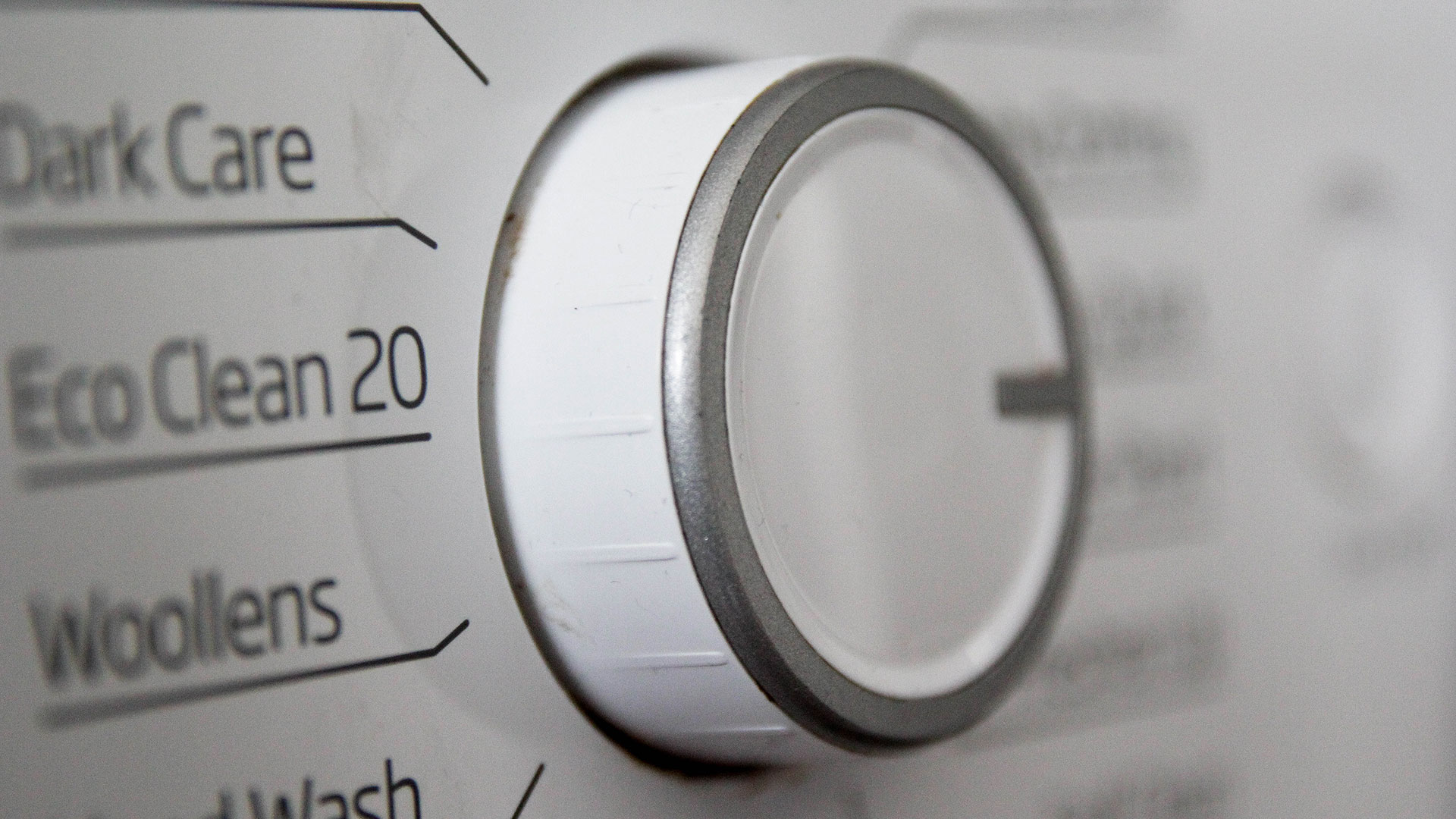How to wash pillows in a washing machine without ruining them
Here's exactly how to machine-wash your pillows without damaging them, according to an expert

Not sure if you can wash pillows in a washing machine? You're not alone. While many pillows can be machine washed, that's not true to every pillow type, and there are certain rules to follow to make sure you don't end up ruining them (especially important if you've invested in the best pillows for your sleep setup).
According to cleaning expert Robin Wilson, designer and founder of lifestyle brand, Clean Design Home: "We spend one-third of our lives sleeping and given that sleep is so important to our mental and physical health, we should make sure that this element of our bedding is clean."
It's not just about keeping stains at bay, it's important to clean your pillows for hygiene reasons too. You only have to read what happens to pillows when they aren't cleaned to learn that dirty pillows will see yellow stains appear and they will become heavier due to build-up of dirt. So, to learn how to wash pillows in your washing machine without ruining them, stick right here.
While you're in the process of spring cleaning, check our guides to how to wash a duvet and how to clean your mattress.
Can you wash pillows in a washing machine?
Generally speaking, most synthetic, down and cotton pillows can be put in the washing machine. Wilson tells us: "Almost all pillows can be washed in a front load washer or a top-loader that does not have a center column agitator." (Officially you should check the care label and base your approach on the instructions there.)
However, there are two specific types of pillows that you can't put in the washing machine. Namely:
- Memory foam pillows
- Latex pillows
Putting either of these pillows in the wash would damage the filling, as well as potentially damaging your machine. If you have a memory foam or latex pillow, spot clean them by using lukewarm water and detergent. Rub the stain in a careful circular motion until any dirty areas start to clear. Be sure to leave your memory foam and latex pillow to dry fully before putting back on your pillow protector and pillow case. Again, if you are unsure, double check your pillow's washing instructions.
Get daily insight, inspiration and deals in your inbox
Sign up for breaking news, reviews, opinion, top tech deals, and more.
How often should you wash your pillows?
If you're wondering how often you'll need to wash your pillows, Robin has some words of advice. She says: "Down alternative pillows are the easiest to wash and also the most hypoallergenic," Wilson says. "Feather and down pillows can be washed but should be done less frequently – around six months."
Experts say on average you should usually wash your pillows every four months. But as soon as you notice sweat or spot body oils on your pillow, do make sure you give them a wash. After all, they are two of the biggest culprits behind why pillows turn yellow. And the longer you leave your pillows unwashed, the harder it will be to get the stains out of them. If you're wondering how to clean a mattress topper head this way.
How many pillows can you machine wash at a time?
This will depend on the size of your washing machine, but you should be able to wash either one or two pillows at once. Make sure you don't stuff too much into the drum, or the pillows won't be able to move around during the cycle, and they won't clean properly as a result.
Start by taking off the pillow covers and removing your pillow protectors, too. These can easily be washed separately, on a more regular basis.
Should you use detergent?
Wilson says: "Use half the amount of detergent. Two pillows may take up a lot of space, but they do not need as much detergent."
What washing machine cycle should you use?
Again, you'll want to consult your pillow's care label for specific instructions – some pillows can be safely washed at a higher temperature, for example, whereas others need to be machine washed on cool). However, the general rule is that synthetic, down or cotton pillows can be washed in a gentle cycle with warm water. Wilson recommends using a strong spin cycle, to remove as much water as possible and make the drying process quicker and simpler.

Can you tumble dry pillows?
Again, defer to the official washing instructions, but typically pillows can be tumble dried on a very low heat. Wilson says: "Tumble dry low and add tennis balls during the dry cycle. Set the dryer to low and remove frequently and fluff to limit lumpiness."
Adding a tennis ball to your dryer can help to prevent your pillows from becoming lumpy and misshapen, which is common with items that have down in them. To make sure they return to their shape after being washed, check in on how your pillows are drying before the tumble dryer cycle comes to an end. And check out our guide to keeping your pillow ultra-fluffy, to maintain plumpness between washes.
Should I be using a pillow protector?
We've touched on this already, but a top tip is to add pillow protector on before you slip your pillowcase on. Pillow protectors are far easier to wash than pillows; they're essentially lightweight pieces of material that can be popped into the washing machine regularly, with the rest of your whites, with no fear of damage. But that's not to say that these crucial protectors can't stand up to sweaty sleeps or other natural body fluids.
Everybody should have a pillow protector. But this is especially the case if you're prone to night sweats or you wear facial moisturizers or oils at night. So easily prolong your pillows lifespan and ensure they stay fresh for longer.
Becks is a lifestyle journalist who specialises in writing about wellness and home products, from mattresses to weighted blankets and cooling comforters. She loves a good pillow for drifting off easily at night, as well as a snug duvet for cozier sleeping.
- Ruth HamiltonHomes Editor
